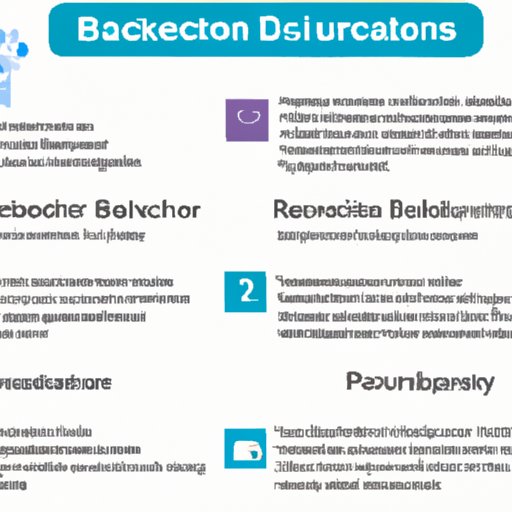Introduction
Blockchain applications are distributed ledger systems that enable participants to securely store and exchange data. They are used in various industries such as finance, healthcare, and supply chain management to provide an immutable record of transactions and help streamline processes. This article provides a comprehensive guide on how to build a blockchain application from scratch, exploring the components, types, steps and best practices for secure development.
Components of a Blockchain Application
A blockchain application consists of several components that work together to create a secure and reliable system. These components include:
- Nodes: Nodes are computers or devices connected to the network that maintain an up-to-date copy of the blockchain ledger.
- Distributed Ledger: This is a shared database where all transactions are stored and can be accessed by all participants.
- Smart Contracts: Smart contracts are pieces of code that define the rules and conditions of a transaction.
- Consensus Mechanism: A consensus mechanism is used to reach agreement among participants regarding the validity of a transaction.
- Cryptography: Cryptography is used to secure transactions and data on the network.
Each of these components plays an important role in building a blockchain application. The nodes are responsible for maintaining the integrity of the network by verifying transactions and keeping the ledger updated. The distributed ledger stores all the data and transactions on the network. Smart contracts are used to automate certain processes and enforce the rules of the network. The consensus mechanism ensures that all participants agree on the validity of a transaction before it is added to the ledger. Finally, cryptography is used to secure data and transactions on the network.
Types of Blockchain Applications
There are many different types of blockchain applications, each with their own characteristics and use cases. The two main types of blockchains are public and private blockchains. Public blockchains are open networks where anyone can join and participate in the network. Private blockchains are closed networks where access is restricted to specific participants. Additionally, there are two types of private blockchains: permissioned and permissionless. Permissioned blockchains require participants to be approved before they can join the network, while permissionless blockchains allow anyone to join without approval.
In addition to public and private blockchains, there are also platforms specifically designed for developing blockchain applications. These platforms provide tools and frameworks for developers to quickly and easily build blockchain applications. Some popular platforms for developing blockchain applications include Ethereum, Hyperledger Fabric, and Corda.

Steps to Building a Blockchain Application
Building a blockchain application requires a series of steps to ensure a successful and secure development. The first step is requirements gathering, which involves understanding the needs of the project and defining the scope of the application. This helps to identify the features and functionalities required to meet the objectives of the project.
The next step is design and architecture. In this phase, the architecture of the application is determined, including the components, technologies, and platforms that will be used. This helps to ensure that the application is built efficiently and meets the requirements of the project.
Once the design and architecture have been established, the development process begins. This includes coding the application, testing it, and deploying it to the network. During this process, it is important to ensure that the application is secure and meets all the requirements.
Finally, once the application has been deployed, it is important to continuously monitor and audit it to ensure that it is functioning properly and is secure from any potential threats. This helps to ensure that the application remains reliable and secure.

Best Practices for Secure Blockchain Application Development
When building a blockchain application, it is important to follow best practices for secure development. Security considerations should always be taken into account when designing and developing the application. This includes ensuring that the application is resistant to attacks and malicious actors. Additionally, it is important to consider data privacy and protection, such as using encryption to protect sensitive data and implementing access control mechanisms.
It is also important to regularly audit and monitor the application to ensure that it is secure and functioning properly. This helps to detect any potential vulnerabilities or issues and address them promptly.
Conclusion
Building a blockchain application requires a comprehensive understanding of the components, types, steps and best practices for secure development. Public and private blockchains offer different features and use cases, and there are many platforms available for developing blockchain applications. It is important to take security into consideration when designing and developing a blockchain application, and to regularly audit and monitor it to ensure that it is secure and functioning properly.
By following this guide, you can successfully build a secure and reliable blockchain application. With the right approach, you can create a powerful and innovative system that can revolutionize the way businesses operate.
(Note: Is this article not meeting your expectations? Do you have knowledge or insights to share? Unlock new opportunities and expand your reach by joining our authors team. Click Registration to join us and share your expertise with our readers.)
